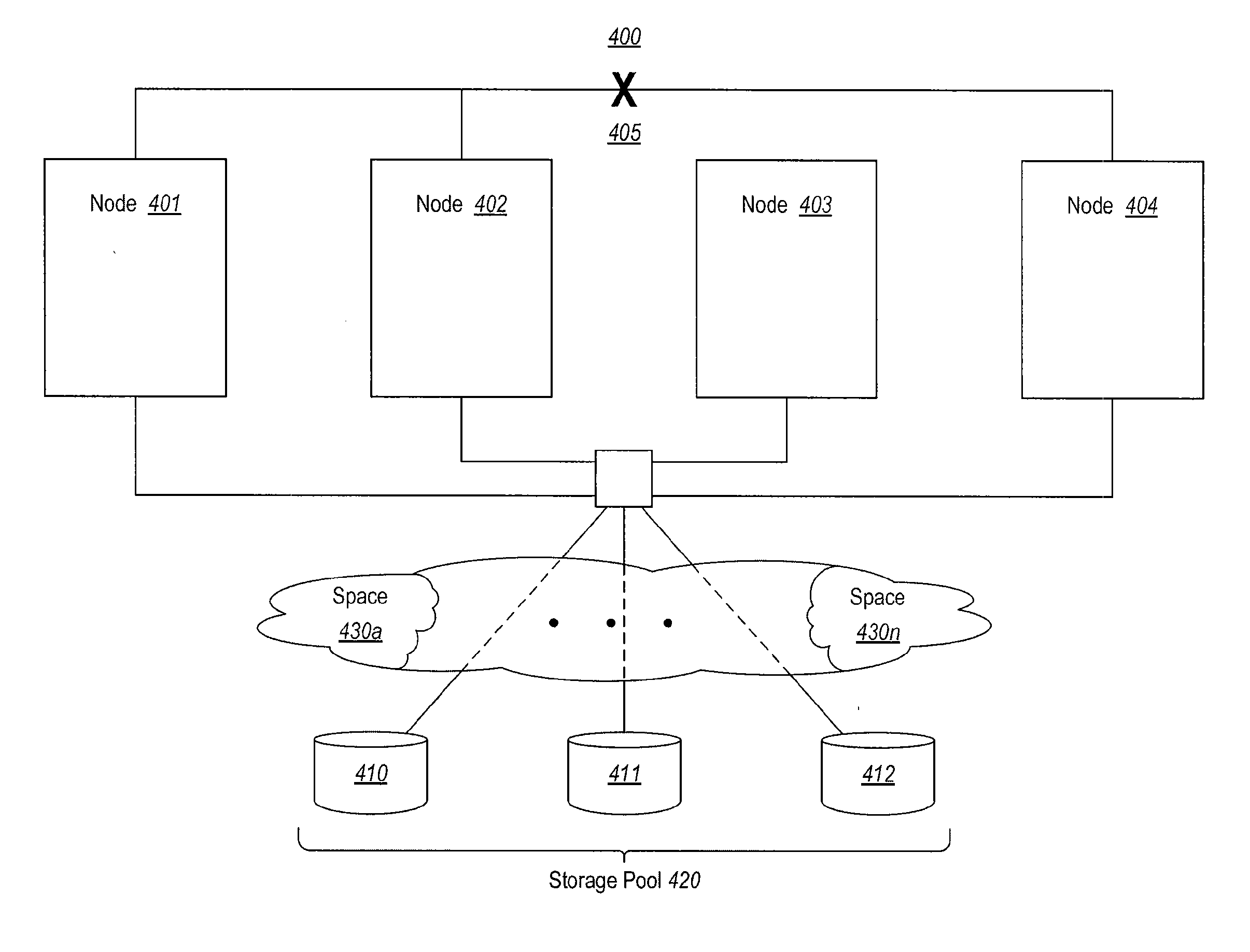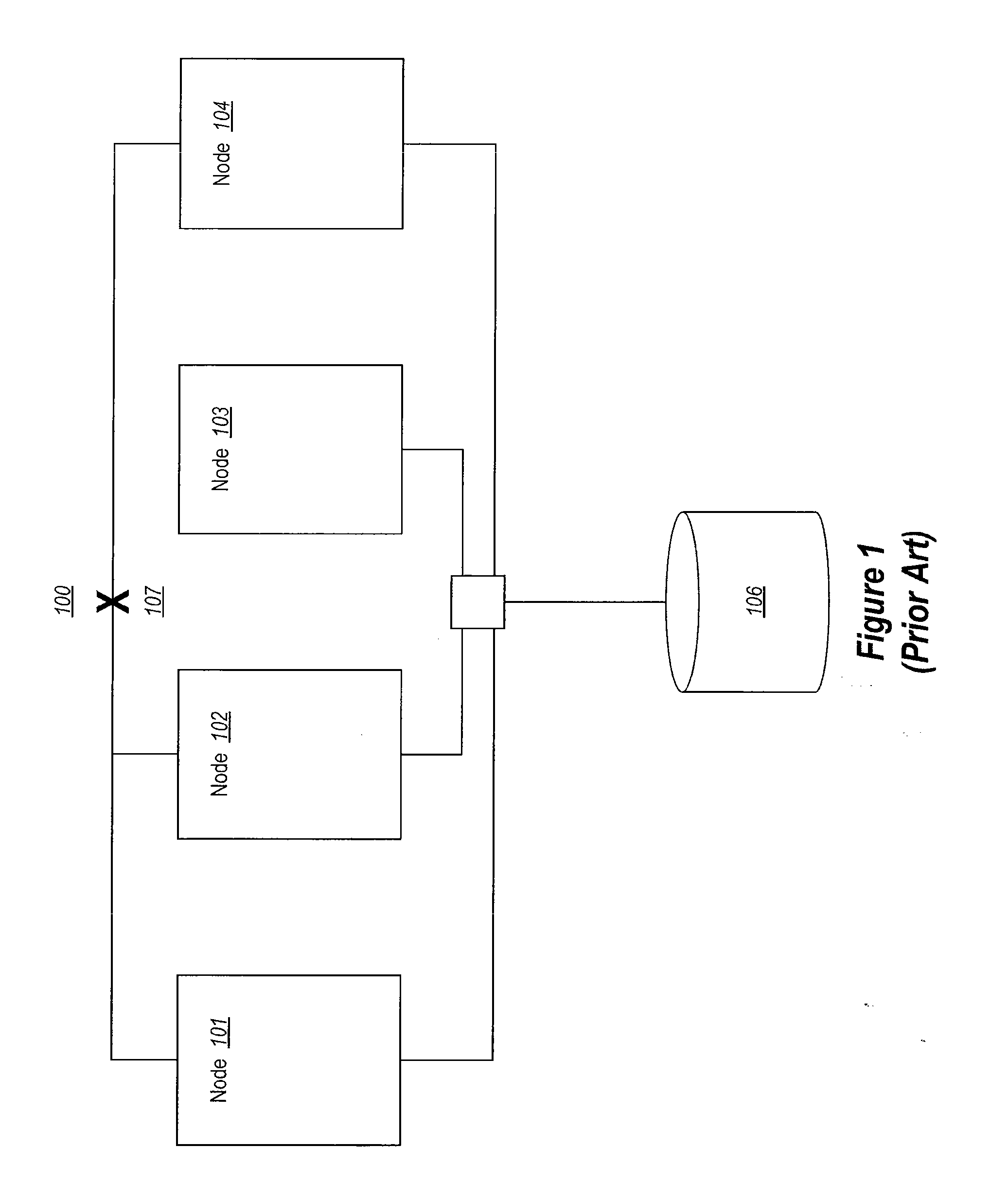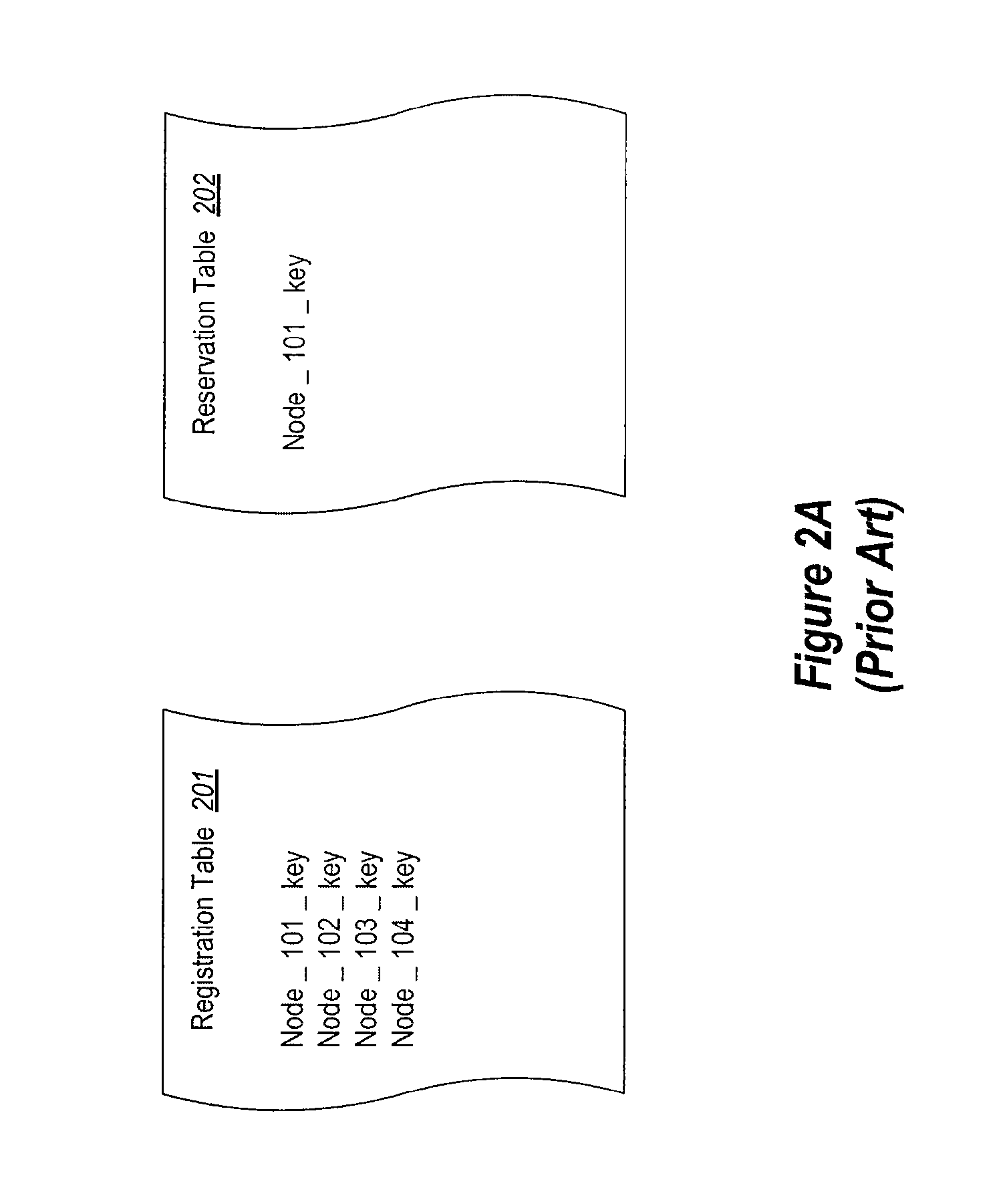Arbitration of disk ownership in a storage pool
a storage pool and disk ownership technology, applied in the field of disk ownership in storage pools, can solve the problems of node in a partition that does not have disk ownership generally beginning to challenge for disk ownership, and the reserve will fail,
- Summary
- Abstract
- Description
- Claims
- Application Information
AI Technical Summary
Benefits of technology
Problems solved by technology
Method used
Image
Examples
Embodiment Construction
[0047]The present invention extends to methods, systems, and computer program products for implementing persistent reservation techniques for establishing ownership of one or more physical disks. These persistent reservation techniques can be employed to determine ownership of physical disks in a storage pool as well as in any other storage configuration. Using the persistent reservation techniques of the present invention, when a network partition occurs, a defender of a physical disk does not remove a challenger's registration key until the defender receives notification that the challenger is no longer in the defender's partition. In this way, pending I / O from applications executing on the challenger will not fail due to the challenger's key being removed until the proper ownership of the physical disk can be resolved.
[0048]In one embodiment, a first node defends against another node's attempt to preempt the first node's persistent reservation on a storage device. After a network...
PUM
 Login to View More
Login to View More Abstract
Description
Claims
Application Information
 Login to View More
Login to View More - R&D
- Intellectual Property
- Life Sciences
- Materials
- Tech Scout
- Unparalleled Data Quality
- Higher Quality Content
- 60% Fewer Hallucinations
Browse by: Latest US Patents, China's latest patents, Technical Efficacy Thesaurus, Application Domain, Technology Topic, Popular Technical Reports.
© 2025 PatSnap. All rights reserved.Legal|Privacy policy|Modern Slavery Act Transparency Statement|Sitemap|About US| Contact US: help@patsnap.com



